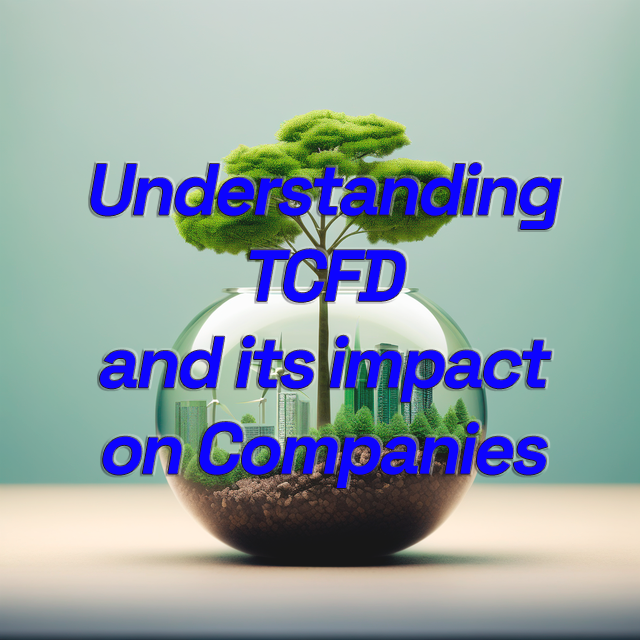In the ever-evolving landscape of sustainability, companies are increasingly under scrutiny for their environmental practices. One critical aspect gaining prominence is the Task Force on Climate-related Financial Disclosures (TCFD). In this guide, we attempt to understand TCFD and its impact on companies. We will delve into the key facets of TCFD, exploring its implications for companies and how they can navigate this evolving framework.
To find out more about Carbon Literacy Training click here: Carbon Literacy Training
What is TCFD?
The Task Force on Climate-related Financial Disclosures (TCFD) was established by the Financial Stability Board (FSB) in 2015. Its primary goal is to develop recommendations guiding companies in disclosing information about the financial impact of climate change. The TCFD focuses on four crucial areas: governance, strategy, risk management, and metrics and targets related to climate issues.
Who Does TCFD Affect?
TCFD operates as a voluntary framework, but an increasing number of companies across various industries are committing to reporting in line with its recommendations. The framework encourages entities of all sizes and sectors to adopt its guidelines, fostering transparency and accountability. This includes financial institutions, energy companies, manufacturers, and retailers.
Is TCFD Mandatory?
As of now, TCFD remains a voluntary framework; however, the landscape is evolving. While its recommendations are not legally binding, governments and regulators are applying pressure. In the European Union, for instance, the Taxonomy Regulation mandates companies to report on their alignment with the EU’s sustainability taxonomy, incorporating climate-related considerations. In the UK, there's a commitment to making TCFD reporting mandatory for listed companies and large asset owners by 2025.
Benefits of TCFD
Embracing TCFD offers several advantages for companies, investors, and stakeholders:
Improved Transparency: TCFD enhances the disclosure of climate-related risks and opportunities, fostering transparency and comparability.
Better Risk Management: By disclosing such information, companies can better understand and manage climate-related risks, promoting more resilient business models.
Enhanced Investment Decisions: Investors gain insights into the impact of climate change on companies, facilitating informed investment decisions.
Increased Sustainability: TCFD's framework drives action on sustainability, contributing to reduced greenhouse gas emissions and climate change mitigation.
Improved Reputation: Companies adhering to TCFD demonstrate commitment to sustainability and transparency, enhancing their reputation and building trust.
How to Comply with TCFD
Compliance with TCFD involves specific steps:
Assess Climate Risks and Opportunities: Evaluate physical, liability, and transition risks associated with climate change, considering various scenarios.
Develop a Climate Strategy: Formulate a strategy addressing identified risks and opportunities, setting emission reduction targets and other relevant goals.
Report on Climate Risks and Opportunities: Provide detailed information on exposure to climate-related risks and efforts to manage them.
In conclusion, navigating TCFD is crucial for companies aiming to stay ahead in the ever-changing landscape of sustainability. By adopting its recommendations, organizations can not only meet regulatory expectations but also drive positive change and contribute to a more sustainable future.
Carbon Literacy Training
Carbon Literacy Training is a great way to start your journey towards carbon net zero. It is a way to engage your staff and encourage them to help you identify ways to reduce your carbon emissions and very often reduce your business expenses.
To find out more about Carbon Literacy Training click here: Carbon Literacy Training
Special Offer to Businesses
We are keen to help as many people as possible become Carbon Literate. To make this financially viable for the businesses we will consider accepting payment for the training in the form of inventory or store gift cards. By doing this we reduce the cash expense to the business, move some inventory and we receive value for our efforts. For more information about this please contact me at ian@positivecarbonimpact.com
To find out more about Carbon Literacy Training click here: Carbon Literacy Training



Comentarios